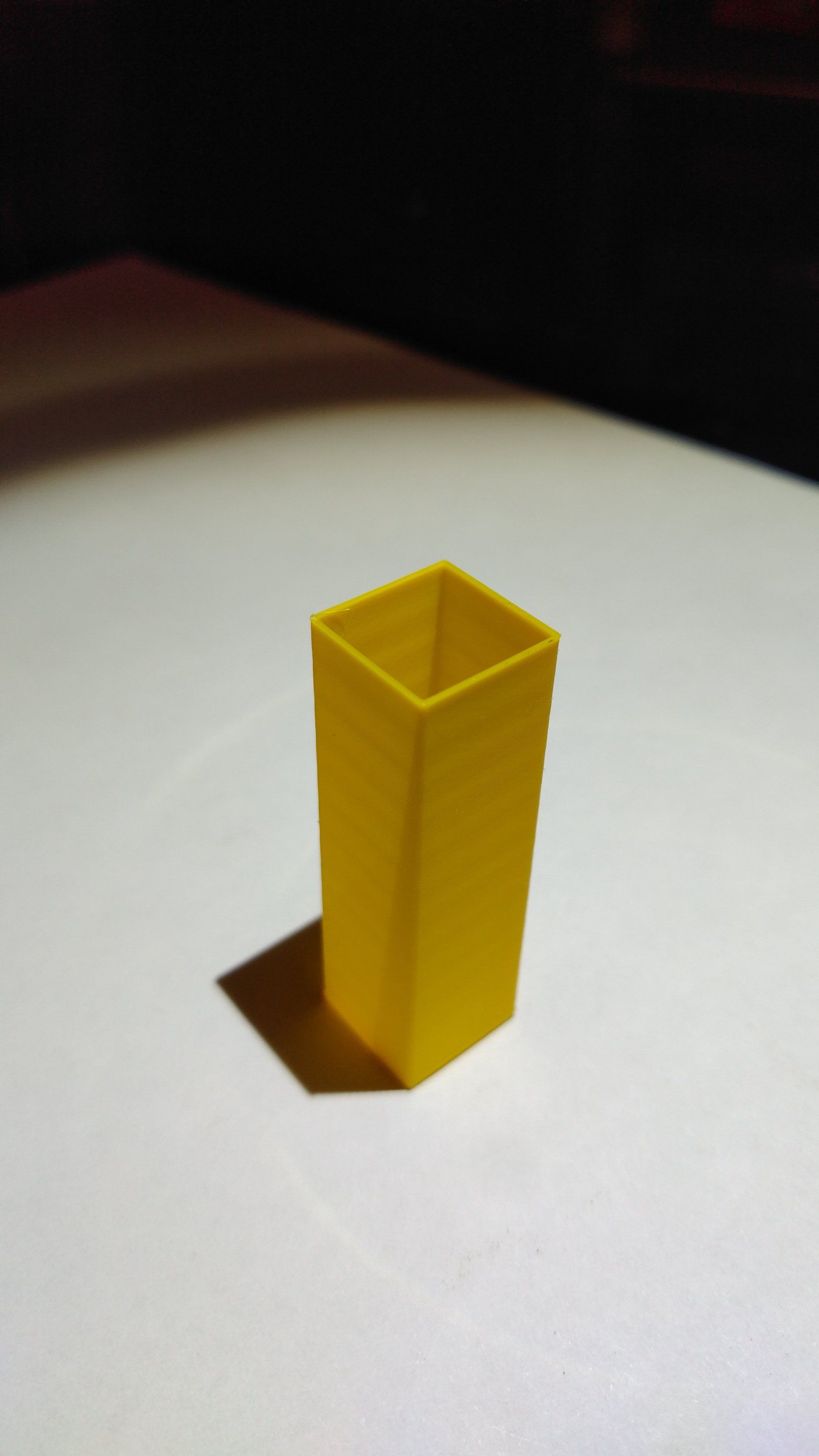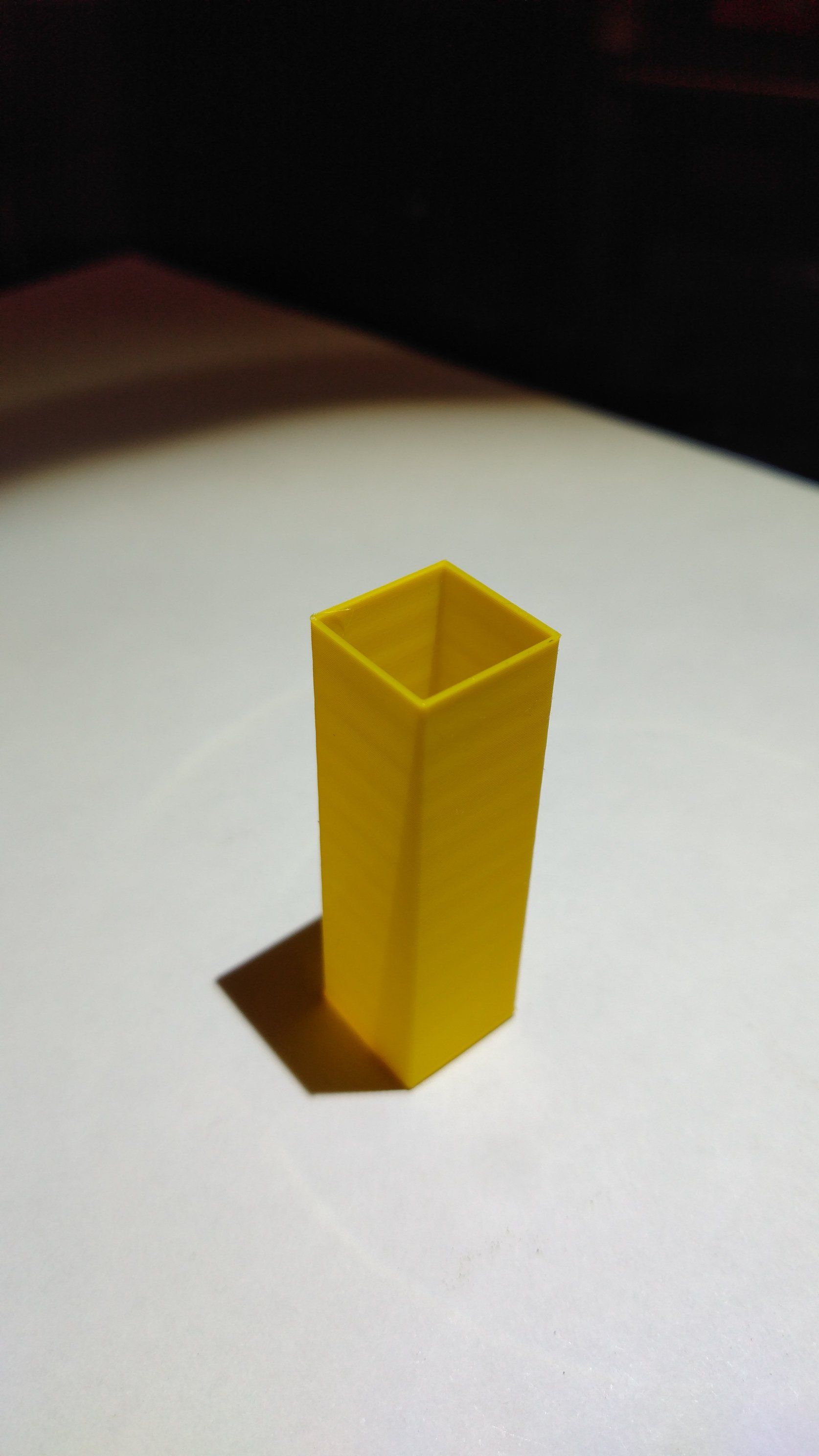How to fix offset on CoreXY
-
If you remove the belts and move the carriage by hand does it move freely throughout the entire range of movement?
-
If the mechanism is built so that without the belts the X axis is perpendicular to the Y axis (and that's how it should be built), when you tension the first belt, the X axis will get pulled out of square. When you tension the second belt, you apply just enough tension to square the X axis again. When you increase the second belt's tension,
the tension in the first belt will increase, so when you tension the first belt, leave it just a little loose.After tensioning, if the X and Y axes are perpendicular, the belt tensions should be pretty closely matched, but the most important thing is that the axes are perpendicular. If the axes aren't perpendicular all your prints will be skewed.
-
@Veti @fcwilt @Phaedrux @mrehorstdmd I don't think that friction is a problem. I just tried moving the head without the belts attached and I can move the head with one finger with very little force. I've uploaded a short video of this to my Dropbox: https://www.dropbox.com/s/9xuigr7xk9jun8d/VID_20191105_221635.mp4?dl=0
On the y axis is a linear rail and on the z axis are normal rails and the head moves on plastic bearings. But as I said I have the problem on every axis, so this can also not be the problem.
I already changed the belt tensioning countless times, but I always get the same result. Not better, not worse. I also don't know if this would explain that on a straight line with three points only the middle point is always off when the head travels back and the outer points are always correct. When the head moves back from the last point to the middle one it seems to travel a shorter way to the middle point as but then makes this difference up when traveling back to the start point. I don't know what could explain such a behavior.
-
I'm not certain what am I seeing on the image you posted:
Are those lines shifts in X Y or diagonal direction, or the wall thinckness chnages?
I'm quite certain that it;s not an X or Y shift, and in a coreXY setup it's quite unlikely that the changes occur only every N layer (because there is a certain number of layers one way then something happens, and again N layers are the other way and this repeats again and again) So I would discount the coreXY part and would investigate extrusion (clean the nozzle too) and the bed (Z).
-
@TheNetStriker The parity of the pattern to your leadscrew pitch must mean the issue is in the z axis. On your leadscrew upgrade have you added bearings to the loose ends of the screws (not the motor end)? This is put in mods quite often but just over-constrains and transfers any wobble in the leadscrews to the bed. If they are fitted try removing them.
-
@TheNetStriker said in How to fix offset on CoreXY:
@Veti @fcwilt @Phaedrux @mrehorstdmd I don't think that friction is a problem. I just tried moving the head without the belts attached and I can move the head with one finger with very little force. I've uploaded a short video of this to my Dropbox: https://www.dropbox.com/s/9xuigr7xk9jun8d/VID_20191105_221635.mp4?dl=0
I see a lot of zip-ties on that extruder carriage. That does not inspire confidence in the rigidity of the assembly...
Post some pictures of your printer in its current state, not other people's copies of the same printer, and marketing BS from the manufacturer.
-
@denke I found out that the effect is worse on some sides of the print than on other sides with a vase print. I hope you can see it on those photos, it is very hard to take a good photo of the effect:
On this picture the left outer wall is perfect. The effect is visible because it is only on the inside of the print and the light shines through because of the thin wall. On the right side the effect is also on the outer wall.

And this is the opposite side of the print. Here the effect is stronger than on the other side. And it's most visible on the side opposite to the left side of the first picture.

From this effect I would guess that it has to be a problem of the CoreXY, or do you have an explanation that the z axis could to something like this? (The bed should not be able to move in x and y because of the 3 linear rail it's attached to)
@littlehobbyshop I did put in bearings at the top of the leadscrews, but I also tested without them and there is no visible change in the print.
@mrehorstdmd The zip ties are only to hold the microscope in place that I currently use to measure the offset of the print head. This is what it looks like without the microscope:

And here is a picture from the leadscrew upgrade:

I will also take some photos of the CoreXY system and post them here.
-
Hi,
Are the belts parallel to the guides in all places?
Frederick
-
If you put two of the same prints next to eachother, do the lines match up?
The effect seems like much less pronounced compared to the first photo you posted.
I think you are quite right, if the outer wall is perfect and the internal wall has problems, than this points to the corexy components.
What happens if you slow down or spead up the print?
Does the printer frame vibrate, or deform on a fast move?
If the head is held in place by the motors and you grab and wiggle the nozzle, can you feal any play or give in the kinematics?
Are the belts tight?
Are all the idlers and most importantly the !!! pulleys on the steppers !!! tight?is the mechanics really free to move? If you remove the belts, and just give a gentle nudge sideways does the head slide freely in both X and Y direction?
!!! Also, I would disassemble bondtech, if the gear on the motor, or the filament grabber ... thing ... (someone help me out? :)) on the gear driven drive shaft is loose it can cause unexpected and hard to track down results.
-
I've now created some more pictures and also two videos that I will explain later on and uploaded everything to my Dropbox: https://www.dropbox.com/sh/9v3dm7zkaz675v8/AAC1bPLbn8EGZeFq-upOlNnfa?dl=0
On one of the photos you can see a spring stick out of the leadscrew. That is just because someone suggested to try out printing without the backlash nut and I couldn't remove it completely because then I would have to remove everything and build it back up again.
@denke Yes the lines of two different prints seem to line up pretty well. I guess the effect is less pronounced compared to the first because this is printed in vase mode so the head does not make as much turns as with a thicker wall. I already tried printing slower but that doesn't change the effect at all. The printer frames wiggles on fast moves and I tried to compensate that with a heavy weigh at the bottom, but also this didn't change the effect.
What I found out is that I can move the head itself quite a bit in every direction by hand when it is held by the motors. I also tried if that play changes when I tighten the belts more, but I was still able to move the head. I've uploaded two videos to my Dropbox folder. The first one shows how much the belts are moving if I pull on the head by hand and the second one shows the same but the head forwards and backwards with the motors. I also found out that the offset can be reduced if I apply a little bit of force by hand in the direction the head moves when it changes direction.
Are maybe the belts to weak or is it normal that I can move them this much by hand? And is there a difference in quality of different belt manufacturers and if so, for what should I look to get a good belt?
-
@littlehobbyshop is right on the money. I would suggest you go over your z-axis assembly again. I've had this exact same problem and it was due to the Z-axis screws translating movement into the platform.
Things to check:
- All bolts on z-axis are tight
- Stepper motor alignment needs to be spot on to ensure you are not enduing bend into your screws.
- Remove bearing constraints from your screws. You can add a captive constraint which is well over size just to stop the screws from wobbling around too much.
- If all your bearing cars are hard mounted to the platform then I would think you are over constrained.
I hope this helps.
-
I just found out something interesting. I've implemented my own simple backlash compensation into my microscope Python test script that simply subtracts 0.08mm from the x coordinate when the head moves back and with this I was able to eliminate the x offset I always had on the center point. I now just see a very small movement in the y direction. Sadly the Duet firmware has no backlash compensation setting I could test.